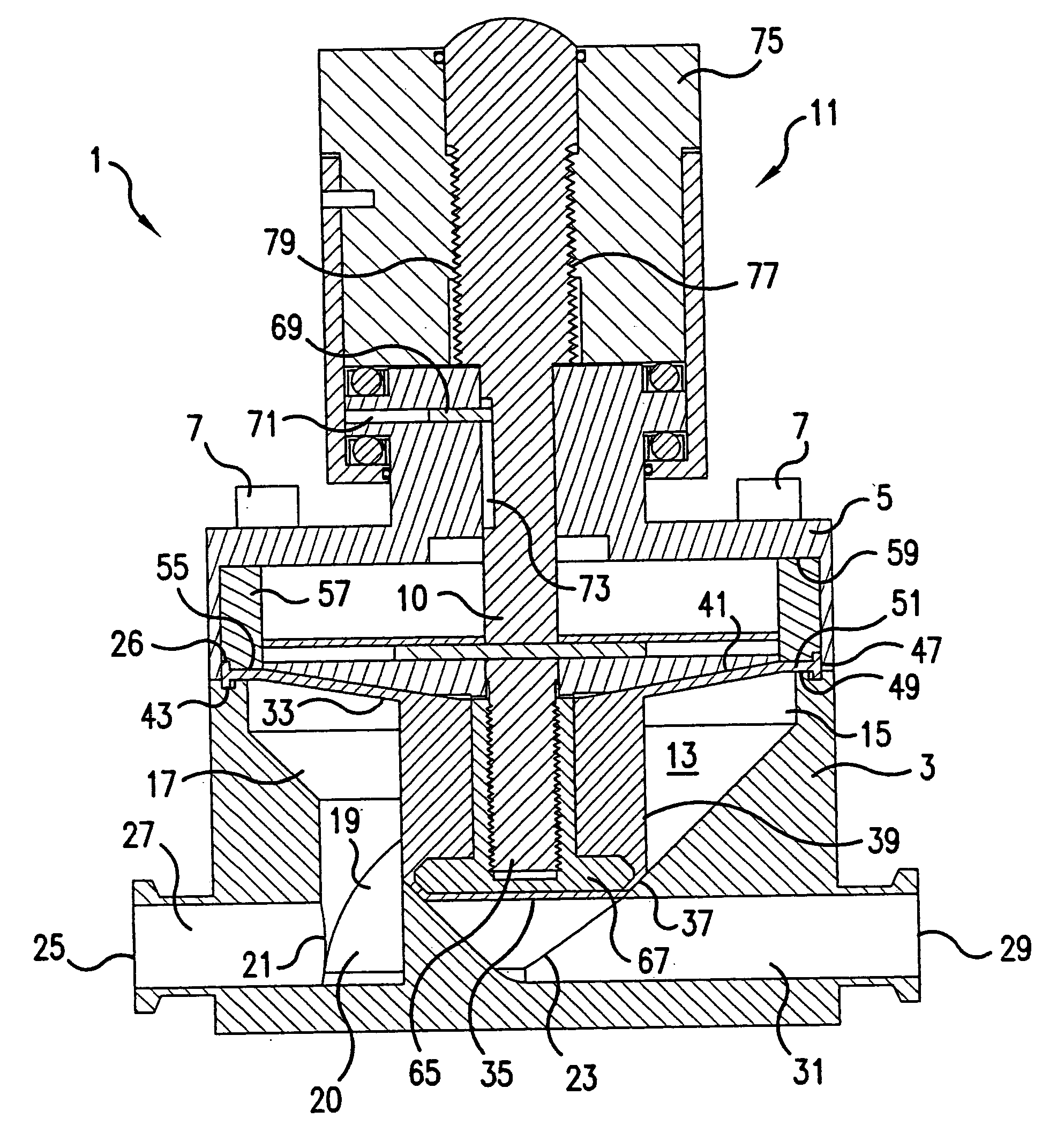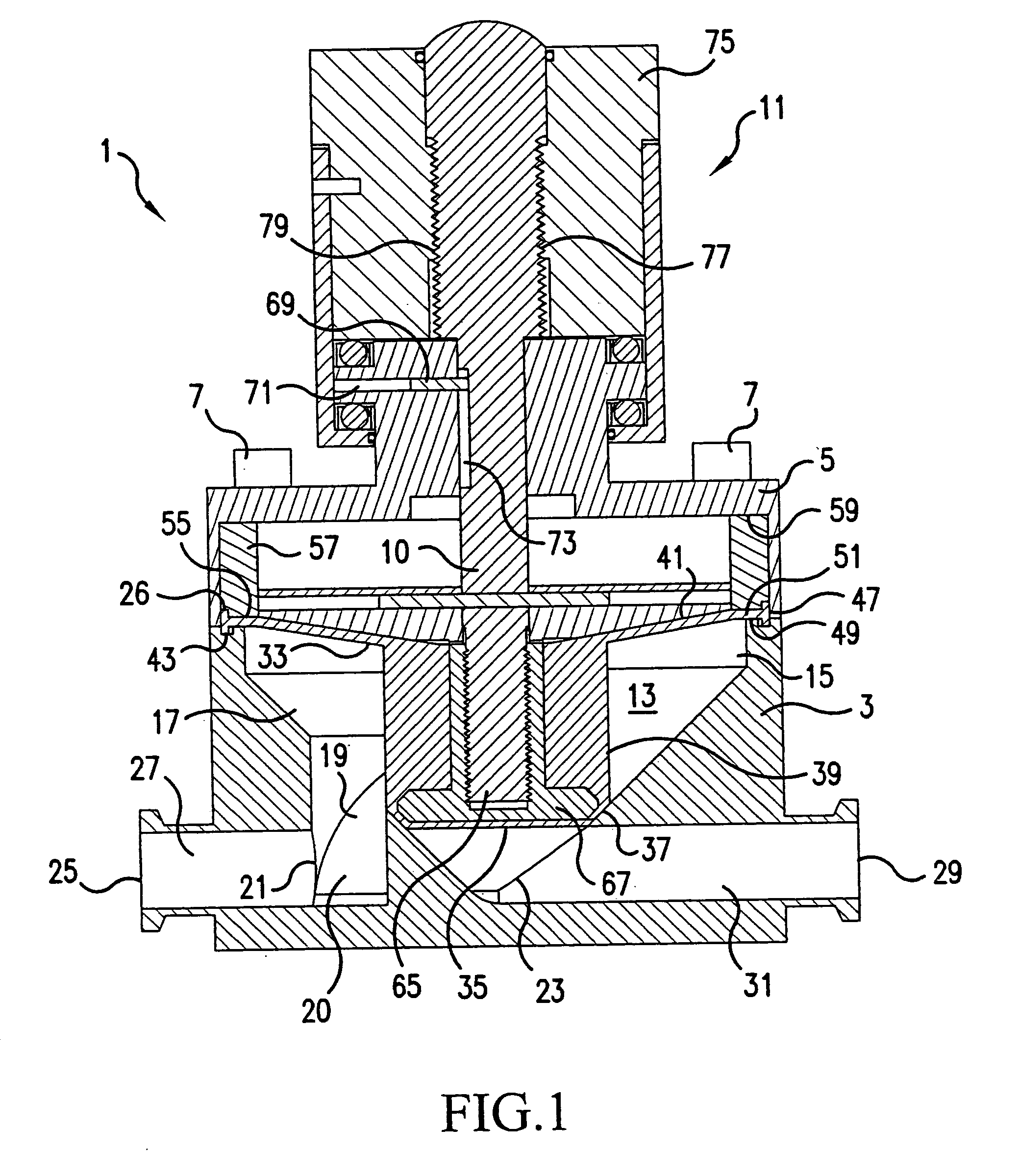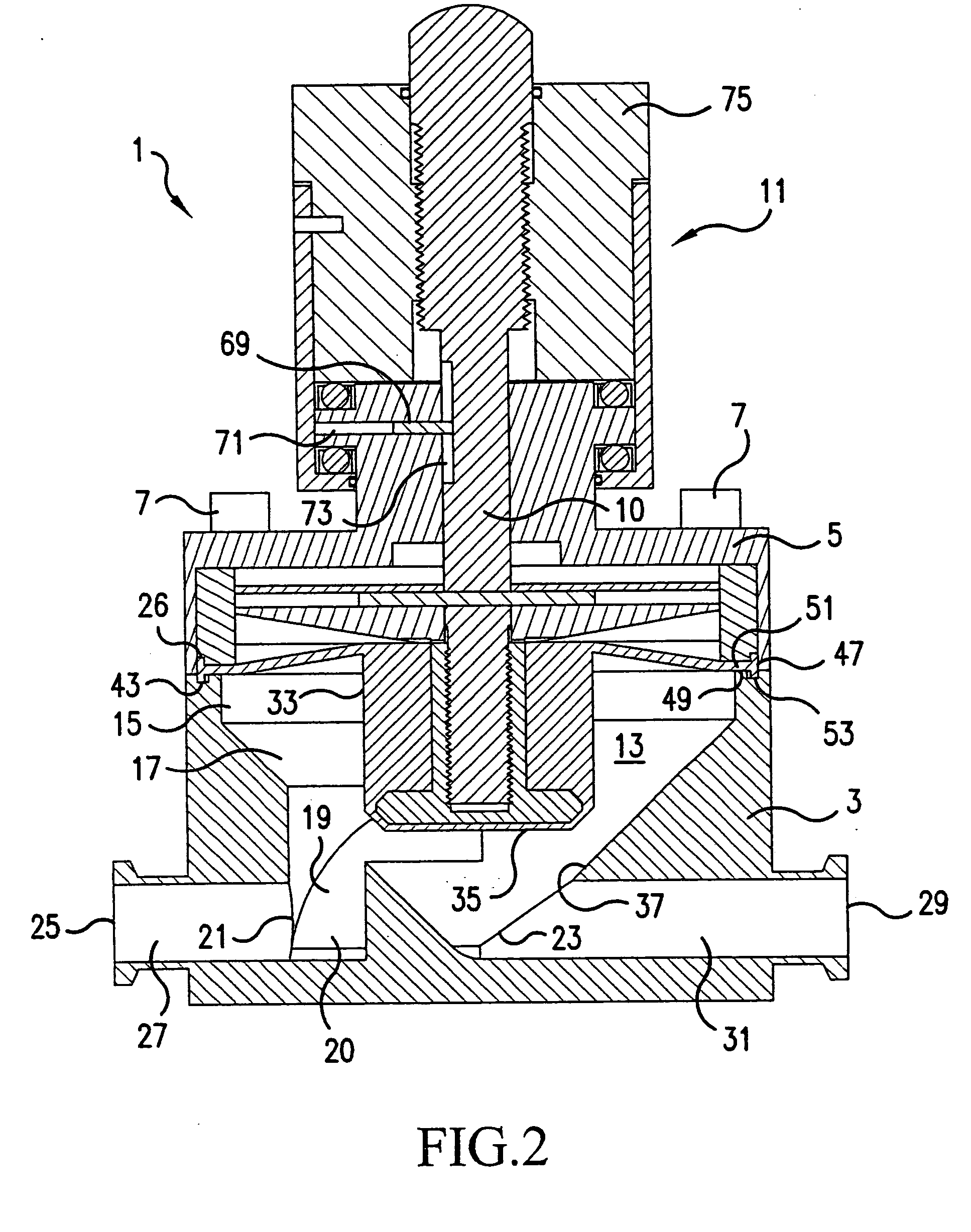Circumferential sealing diaphragm valve
a diaphragm valve and circumferential sealing technology, applied in the direction of diaphragm valves, engine diaphragms, functional valve types, etc., can solve the problems of significant risk, insufficient cleaning of equipment in these processes, and insufficient procedures executed
- Summary
- Abstract
- Description
- Claims
- Application Information
AI Technical Summary
Benefits of technology
Problems solved by technology
Method used
Image
Examples
Embodiment Construction
[0042] The present invention will now be described with reference to the accompanying drawings. Referring to FIGS. 1-5, a first embodiment of the present invention will be described. FIGS. 1 and 2 are vertical cross-sections through the valve 1 of the present invention. FIG. 1 illustrates the valve in a closed position and FIG. 2 illustrates the valve in an open position.
[0043] The valve 1 includes a valve body 3 and a bonnet 5. The bonnet 5 can be connected to the valve body 3 through numerous types of mechanisms including clamps, etc. However, in FIGS. 1-5, the bonnet 5 is illustrated as being connected to the valve body 3 by a plurality of bolts 7 which extend into corresponding bolt holes 9 formed in the bonnet 5 and the valve body 3 (see FIG. 3).
[0044] The valve 1 also includes a valve actuator rod 10 mounted in the bonnet 5. In FIGS. 1 and 2, the valve actuator rod 10 is illustrated with a manual actuator 11 for opening and closing the valve. However, it should be understood...
PUM
 Login to View More
Login to View More Abstract
Description
Claims
Application Information
 Login to View More
Login to View More - R&D
- Intellectual Property
- Life Sciences
- Materials
- Tech Scout
- Unparalleled Data Quality
- Higher Quality Content
- 60% Fewer Hallucinations
Browse by: Latest US Patents, China's latest patents, Technical Efficacy Thesaurus, Application Domain, Technology Topic, Popular Technical Reports.
© 2025 PatSnap. All rights reserved.Legal|Privacy policy|Modern Slavery Act Transparency Statement|Sitemap|About US| Contact US: help@patsnap.com



